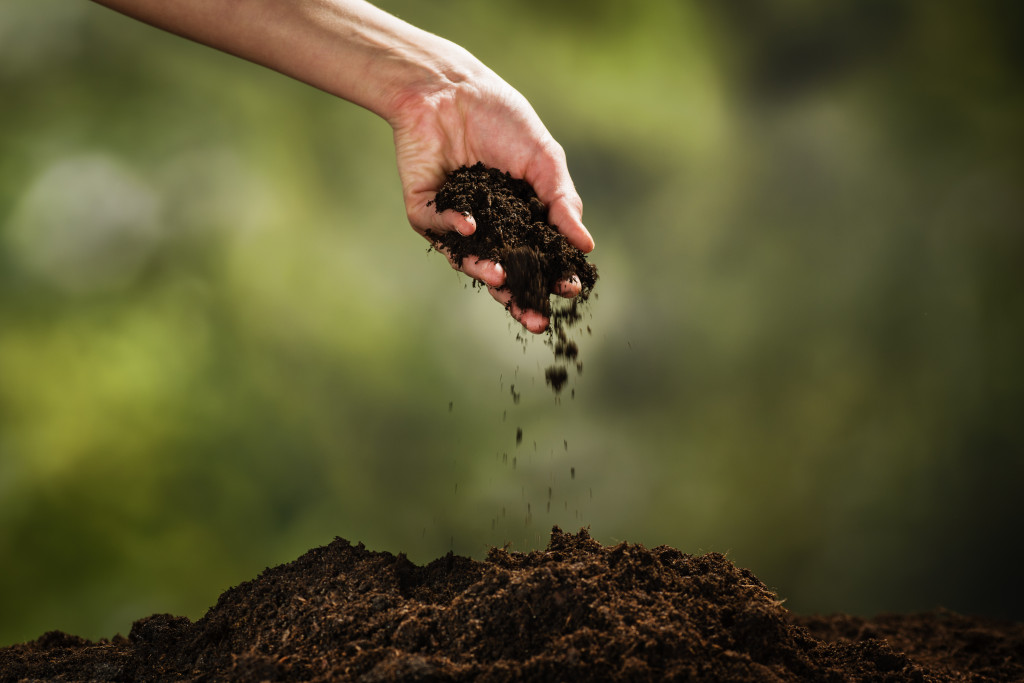What does it take to own a beautiful and eco-friendly garden? Many people planning on revitalizing theirs are usually quick to point out the importance of native plants, good irrigation, and natural pesticides. It happens all too often that people neglect the significance that their soil health plays.
If you want to start your project right, then you’ll need to pay more attention to your soil’s current condition. Using the Willamette Valley Soil Quality Guide, which is the standard farmers use, you can identify avenues for improvement. Make sure that you check different areas of your garden to get a more accurate diagnosis and, in turn, a more lasting solution.
Check: Soil Structure
The structure of your soil determines how well water and air can move through it. The better the flow of these elements, the healthier your plants are. If you want to know what your soil’s structure is, dampen the soil and scoop out a medium-sized container that is around ten inches deep.
Make sure that it is intact in your container because you’ll have to watch how the soil breaks when you apply slight pressure on it. When the aggregates separate, take note of their shape and how difficult they are to break. The easier it is and the rounder the aggregates, the better your soil’s health. Remember, though, that too much softness is not ideal either.
If the soil is beyond your abilities to remedy, seek professional help. You can work with a local gardener in Salt Lake City or seek hydroseeding options.
Check: Organisms
If different organisms can thrive in your soil, then you can be sure that it’s healthy. One way to determine this is to dig a six to nine-inch deep hole in your garden soil. Make it wide enough to have a good view inside, and make sure that you have good natural lighting. Keep observing for movement inside and count how many organisms you see. It could be spiders, centipedes, or beetles. If you counted anything less than ten, then your soil needs a little more help.
Check: Earthworms
You already checked for critters, so why perform a different test for earthworms? Well, worms perform a slightly superior function in aerating your soil, and the more of them you see, the better the chances that your soil can support your plants. Moreover, worms consume the organic material that gives your soil the nutrients it needs. You can check for them the same way you did for the other organisms but keep a separate count for earthworms. Anything less than three is a bad sign.
Check: Compaction
A compact soil leaves no room for water, air, and nutrients. In short, it will not allow your plants to take root, break through the surface, or consume enough nutrients to survive. To check, get a long thin stick or a wire. Pierce the soil and keep sliding it in until you feel something break or bend. A healthy soil won’t cause these until after the stick or wire is at least twelve inches deep.

Check: Effort
At this point, you’ve already dug enough holes in your garden soil to determine just how workable it is. While gardening is laborious, tilling your soil shouldn’t cause any of your tools to break or result in rock-like aggregates. If it does, your soil is in no condition to give you a healthy and successful garden.
Check: Water Retention
How long do you wait to water your plants after a rainy afternoon? This depends on where you live and the nature of your plants. If you water too soon after an outpour, then your soil isn’t retaining enough water to hydrate your plants. Healthy soil should be able to retain enough water to keep your plants well-fed until the next watering.
Check: Water Infiltration
Checking for water infiltration takes a bit more focus and patience, but it’s worth the effort. A soil with sufficient infiltration can deliver water to the roots at a good pace, making each watering effective.
What you’ll want is to remove the bottom of a small can and push it into the soil. Leave around three to five inches of it above the surface, and then fill it with water. Keep repeating the process until the absorption slows. Anything slower than a half-inch per hour, your soil needs better water infiltration.
Check: Roots
Healthy roots are a tell-tale sign of healthy soil. Dig out a plant, preferably a weed, and check the state of its roots. You’ll want to find long strands because anything too short or too brown means your soil is in bad condition or you have root-eating pests.
Minding Your Soil
While it sounds like a lot of work, minding your soil is a necessary step you must take. Liken it to laying a reliable foundation for your house. Making sure that your soil is in tip-top shape before you proceed with your gardening projects increases the likelihood of success.
